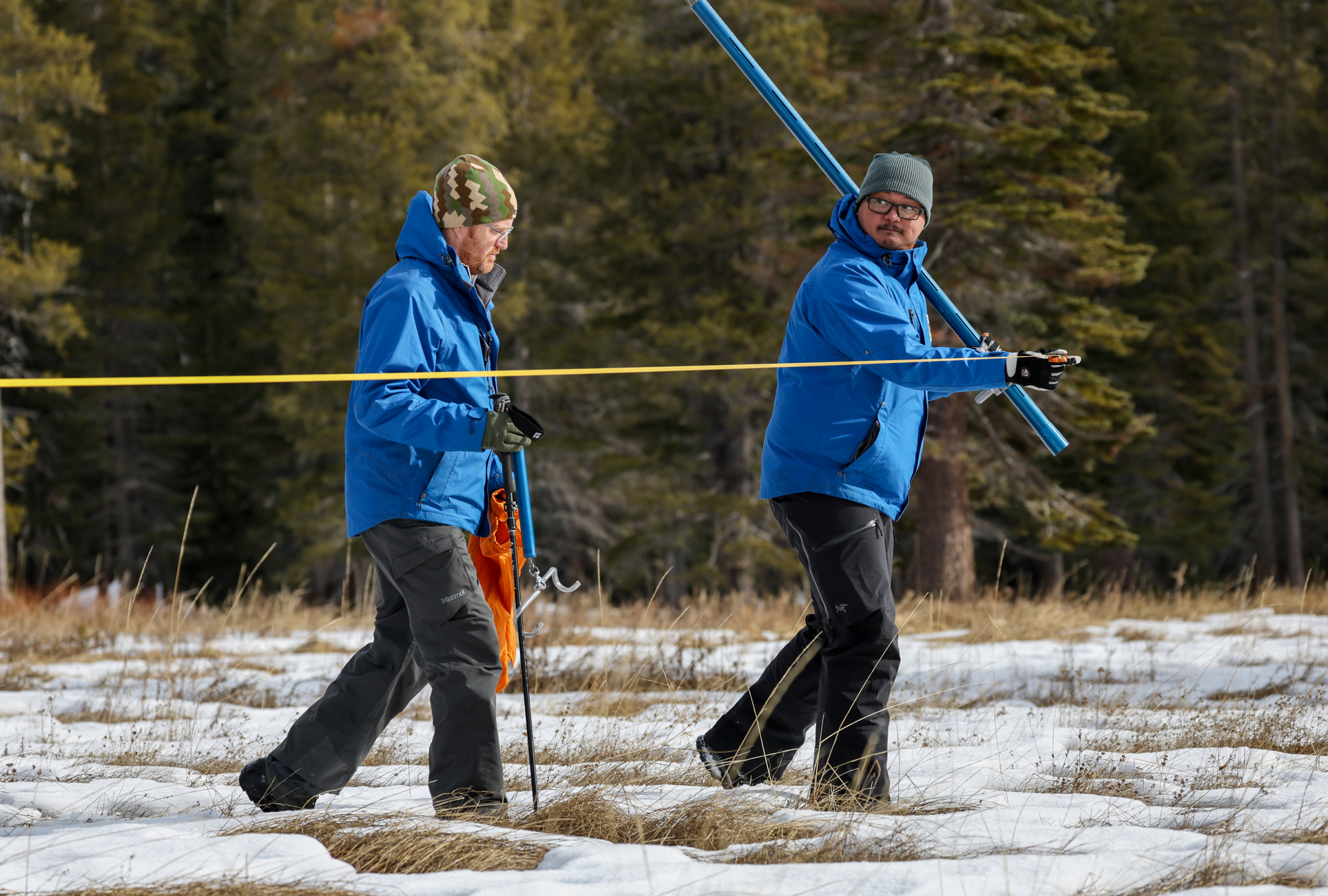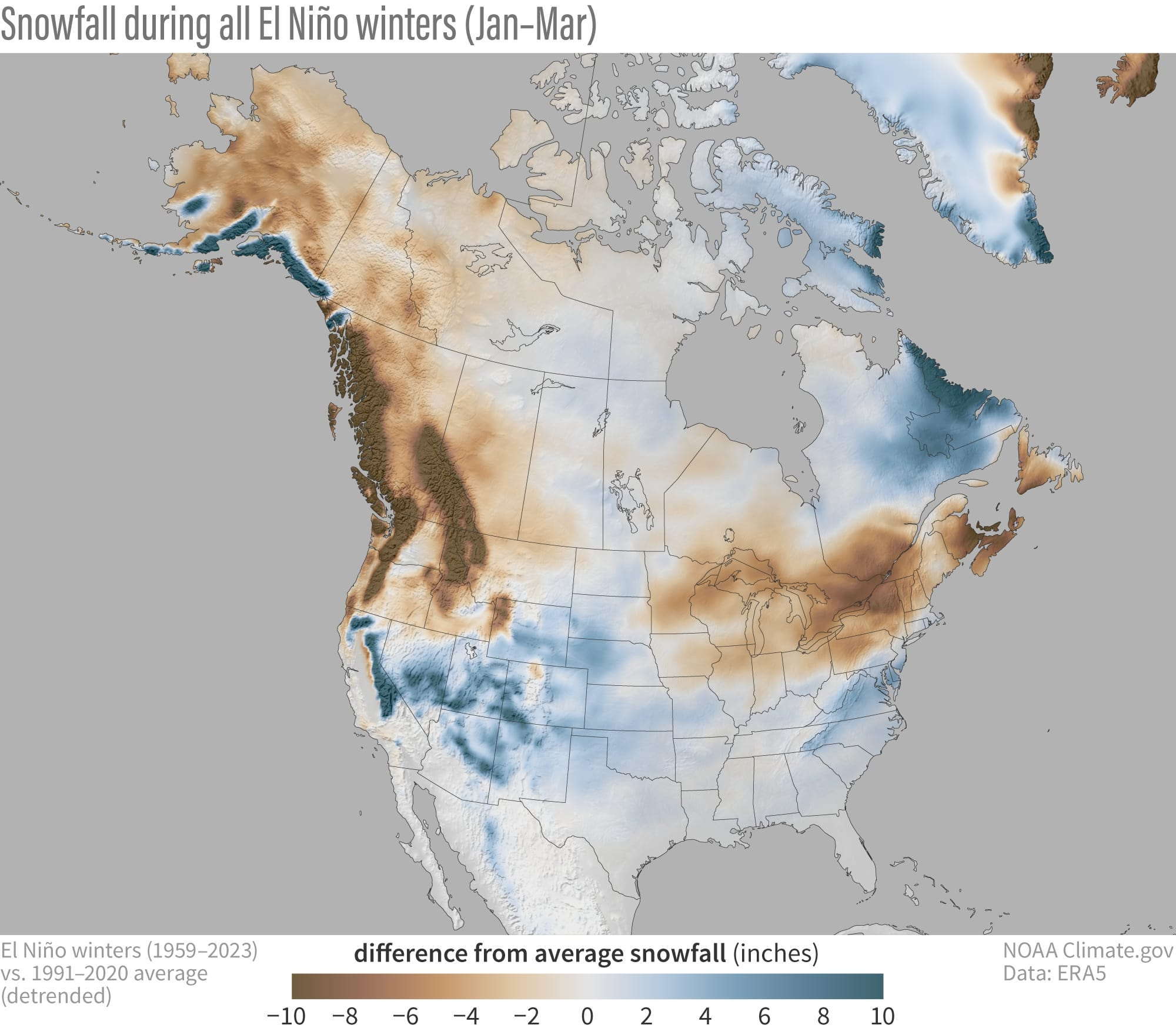California's statewide snowpack is 25 percent of average for this date, according to Tuesday's snow survey by the state's Department of Water Resources.
State reservoirs are still above average for this time of year due to a wet season last year, and strong El Nino conditions are present in the Pacific Ocean and are expected to bring more snow.
"Although El Nino does not guarantee an above average water year, California is preparing for the possibility of more extreme storms while increasing our climate resilience for the next drought," DWR director Karla Nemeth said in a statement.
Tuesday's manual measurement was done by the team of Sean de Guzman, the unit manager at the Phillips Station snow course in the Sierra Nevada, where snow measurements have been taken since 1941. It is one of 260 different snow courses measured statewide.
The test involves going to the exact same locations on the site and stabbing the snow-covered ground with a pole for a cookie cutter sample. That sample is then analyzed for its water content and compared to data collected at other times and locations.
At the Phillips station, the snow depth was 7.5 inches with a snow water content of 3 inches. Those findings are 30 percent of average to date for the same site. April 1 is when snowpack is typically at its peak, and Tuesday's measurement is 12 percent of that average high mark.
That's in line with DWR's 130 automated sensors throughout the state, which are finding snowfall at 25 percent of average for this date. Last year's unusually heavy precipitation resulted in a reading of 185 percent of average on the same date.
"Here at Phillips last year, we were standing on 5 feet of snow," Guzman said as he stood on a patchy field of snow and brown grasses. "Today's result tells us it's really too early to determine what kind of year we'll have in terms of wet or dry. Luckily our statewide reservoirs are still about 116 percent of average right now."
"According to our measurements from 1978 to 2019, we are seeing an increase in rain and a decrease in the amount of snowfall," said Andrew Schwartz of University of California, Berkeley's Central Sierra Snow Lab, a field research station located in Soda Springs.
"The conclusion that we see from that research is that our snow season is shortening. October and November used to be dominantly snowfall at the snow lab. And we've seen October switch to rainfall as well as May. So, we're seeing a shortening of the season from either end, and there is a lot more rain even in the middle of the winter," Schwartz said.
In preparation for a potentially rainy winter, DWR is advising all Californians to stay aware of local flood conditions through their county water districts. In a statement, the department says the State-Federal Flood Operations Center has pre-positioned extra flood-fighting materials, including 2.2 million more sandbags, at locations across the state.




Comments